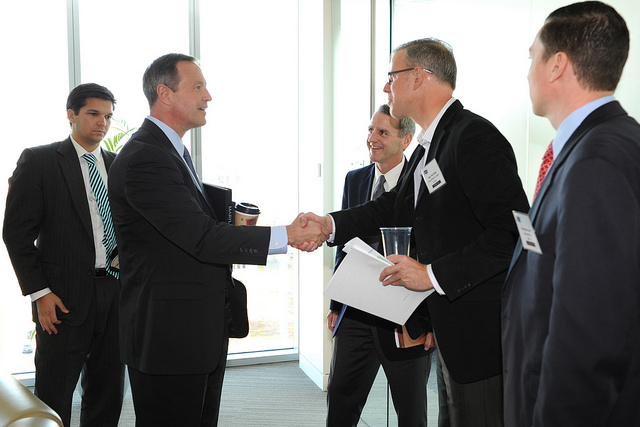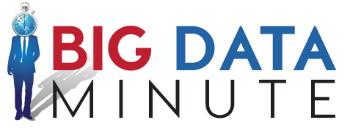
by Rich Benvin | Jul 19, 2015 | Business Optimization, Business Transformation, Case Studies
Redesign and Tuning of Business Systems Optimizes Growth
Growing the business is the goal for most organizations. Managing that growth becomes difficult while managing and meeting the day-to-day business goals. Cliintel provides real world experience to facilitate operational improvements, create best practices and take businesses to their next level of success.
The Client:
A leading provider of insurance for new housing construction as well as appliance and home warranty services had experienced exponential growth. This growth began taxing internal systems, specifically the IT department’s trouble-ticketing system.
The Business Issue:
When organizations experience extreme business surges, much of their time, money, focus and resources are spent upgrading and adding customer facing applications while internal systems are pushed to their limits, or even neglected. The client’s IT department found itself needing to support both a myriad of new tools on multiple platforms, as well as an onslaught of new employees. The rudimentary trouble ticketing system they had been using for years was not capable of responding to the rapid growth. The increased utilization of the ticketing system soon revealed that the system and associated processes did not support adequate problem identification, timely resolution or proactive trend reporting. Furthermore, established and ‘rightsized’ Service Level Agreements had not been baselined or followed and resulting in longer than necessary system outages and downtime.
The new and improved utilization of the ticketing system resulted in a cost savings of $75,000 per year and created an enterprise repository and improved management of resources.
The Approach:
Utilizing Cliintel’s INSIGHT methodology, the team took a holistic view of the client’s business operations, and through a series of end-user interviews and operational observations, gathered system and user requirements. Existing contractual commitments required that the client continue to use the existing trouble-ticketing system. Cliintel examined the existing system and identified features and functionality not being used and presented a plan to modify and upgrade current versions to meet the growing needs of the client.
The Solution:
Cliintel worked with the trouble-ticketing vendor to complete system reinstallation and improved report development. The trouble-ticketing system was redeployed with appropriate support, documentation and procedures. Cliintel established modified procedures and standards to facilitate disciplined ticket management.
The Results:
The reimplementation of the trouble ticketing system enabled the client to reduce system outages and proactively prevent future outages from occurring. The new and improved utilization of the ticketing system resulted in a cost savings of $75,000 per year and created an enterprise repository and improved management of resources.
We’re proud to help our clients solve tough problems and achieve stunning results. To see what kind of results Cliintel can deliver for you, please visit www.cliintel.com or e-mail askcliintel@cliintel.com.

by Tara Buck | Jul 13, 2015 | Business Transformation
Where do we start the change efforts to fix the processes? First, we have to identify the problem with some analysis––careful, considerate, objective, dispassionate analysis. The only way to accomplish this is to be self-reflective; avoid reflexively and aggressively going after your internal supplier on the front end or your internal customer on the back end. Most everyone in any company is accustomed to working within their silo or department and looking for efficiencies within their area. You will rarely find that managers and operational people are looking for efficiencies that relate to their internal supplier or internal customer—the departments on either side of their silo. They are not typically attuned to how the particular processes within their silo or department impact the end result. In other words, mangers within a silo are simply looking to drive out costs or to make things move faster within their own particular purview.
Only after we examine intention to retention within our own silo will we have any chance to understand how we might change the activities within a specific silo and determine appropriate suggestions for our internal supplier or customer. This is the point at which an outside consultant may be useful to you, someone not deterred by politics and agenda, and who can democratically and sympathetically look at the SIPOC within each silo and communicate ideas in a nonthreatening way. The problem in proceeding without outside assistance is that as soon as you confront somebody in another silo about what they are doing, they are going to get defensive. It is just a natural human reaction. I’m not saying it is impossible to do without an outside consultant, but it does require a little more creativity and a willingness to slow down, to spend time building a relationship and a decent level of trust. Otherwise, your efforts will be counterproductive, and you just put the other silo on the defensive.
A consultant is not the magic pill; any time a consultant comes in, some people will automatically get defensive. Typically, when there’s a consultant hired, it is interpreted to mean that someone higher up the in the company believes there is a need for change, and obviously they are serious about it because they have brought people in from outside. That is a bit threatening, but if you hire the right consultant, it doesn’t need to be.
The next step is to engage in a purposeful conversation with clearly outlined goals for the betterment of everyone, meaning the company in general, which will also impact the company’s external customers. Next, conduct an analysis of all stakeholders in the target silo. This is where a consultant can come in and assess, in a nonjudgmental way, the stakeholder group and see who is going to be receptive, who is going to be protective or defensive, and who is going to be an obstructionist.
It has often been observed that there are three levels of personality types: those that watch things happen, those that make things happen, and those who wonder what’s happening. This last group doesn’t seek to understand what’s going on but will do their best to shut everything down because they don’t like change. They don’t spend the time to evaluate whether it is good, bad, or indifferent. The attitude is, “That’s how we’ve always done it.” Everybody will deny they ever had that thought, but they’re kidding themselves. It is just basic human nature—“new and different” is scary.
Pick your partners and your battles: Who is going to be easiest to work with? It is not usually who you think. If you are doing this internally, you might assume, “I’ve known Lynne over in my supplier silo for a long time. We’ve gone to conferences, and we have a good relationship.” That might be a good place to start, but do not assume this new interaction will be more fruitful because of that relationship. The change effort that we’re talking about here may require less of a social awareness of one another and more a business respect level, along with a congruence around the idea of change for the betterment of the two silos and, ultimately, the external customer. If you can find the later, professional alignment, as well as personal alignment, you can make magic, we have all been on or seen what a great team can accomplish—regardless of talent.
-Richard M. Batenburg Jr.

by Richard Batenburg | Apr 2, 2015 | Business Transformation
Imagine that you’re a department head in a regional office of a large national organization. For years, you’ve campaigned for a business process change that requires a new software deployment. Despite the steep up-front cost, you’re certain the return on investment will be impressive. Your process change concept may not have much traction at the division or corporate office, but you’re confident that if you can get it off the ground, it will be a winner. Finally, you’ve managed to get budget approval from the regional VP. You’ve found the best software developer and you’re ready to roll. Or are you?
Experienced process change consultants advise that an approved budget may not be enough to get the job done. Many a process change has been killed mid-stream because its sponsor failed to secure upper-level commitment. When tackling process change, it’s obviously essential to engage the stakeholders who will be directly affected. But in most cases, especially if an intervention or new software is involved, don’t forget to seek support as high up in the corporate chain of command as possible. Think of it as crossing the street in a combat zone: look left, look right, and then look up.
The more levels of management in an organization, the more important it is to have senior executive support for process change. In large and multi-national companies, it isn’t unusual for the plans of local business units to get lost in the corporate shuffle. Enlisting executive commitment for your process change will ensure that you can overcome the resistance you may encounter along the way.
Without visibility higher up the ladder, a process change project can be killed or sidelined for several reasons.
- New budget cuts may be mandated – an all-too-common experience these days. If HQ is unaware of your unit’s need
for process change, it’s an easy cut to make.
- Unbeknownst to you, the division or corporate office may fund a different solution to the problem your process change is intended to solve, making yours redundant or irrelevant.
- Your process change may not align with company strategic direction.
Although you may be action-oriented and eager to stake out your territory, haste can definitely make waste. In some cases, senior executive support is so critical that you’re doomed without it. In most cases, getting that commitment will simply allow you to get the job done more quickly and less expensively. Even if your process change plans are turned down when you seek upper-level endorsement, it’s better to get that decision sooner rather than later. Instead of wasting time and resources on a project that ultimately won’t see the light of day, you can spend the time building your case, or on other, more productive efforts.
While the risks of not having executive support are many, the benefits of having it are equally great. Process change experts know that the higher you go, the better the solutions. While you are familiar with local business unit issues, a more global perspective will help determine if the local problem you’ve identified is truly unique. Perhaps a more comprehensive solution can be of benefit to the larger organization. An aerial view may also help identify potential allies from other business units with whom you can team up to make your case.
How high is up? A good rule of thumb for seeking executive support is to go as high as possible, then try for one level higher. Incorporating senior executive commitment into your process change plans will ultimately make for a smoother deployment and get you to the finish line faster.
To learn more about process change management, please visit www.cliintel.com or e-mail askcliintel@cliintel.com.









Recent Comments